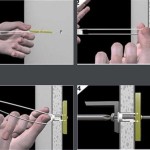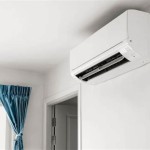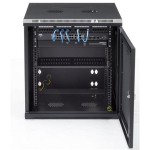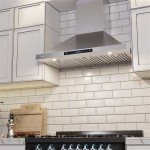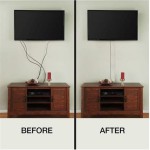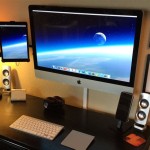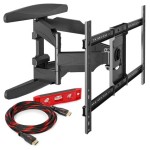Determining the Standard TV Height for Wall Mounting
Wall mounting a television provides a sleek, modern aesthetic while optimizing space. However, achieving the ideal viewing experience hinges on mounting the television at the correct height. Incorrect placement can lead to neck strain, eye fatigue, and a less immersive entertainment experience. The “standard TV height” is not a uniform measurement, but rather a range influenced by various factors. This article will explore the key considerations for determining the optimal TV height for wall mounting, offering guidance to ensure comfortable and enjoyable viewing.
Understanding the Eyeline Rule
The fundamental principle guiding TV height placement is the eyeline rule. This dictates that when seated in your primary viewing position, your eyes should align with approximately the center of the television screen. This minimizes neck strain, as the viewer does not need to constantly tilt their head upwards or downwards. The precise height will vary depending on seating arrangements and individual preferences, but adhering to this rule provides a solid starting point.
To apply the eyeline rule, start by measuring the distance from the floor to the average viewer's eye level while seated. This is best accomplished with someone sitting in their usual viewing chair or sofa. This measurement provides a target height for the center of the TV screen. Next, determine the total height of the television set itself. Divide the TV height in half to find the center point of the screen. Finally, calculate the distance from the floor to the mounting point on the wall to achieve the desired center screen height. This calculation can be expressed as: (Desired Eyeline Height) - (TV Height / 2) = Mounting Height from Floor.
For example, if the average seated eyeline height is 42 inches and the TV is 30 inches tall, the calculation would be: 42 - (30 / 2) = 42 - 15 = 27 inches. Therefore, the bottom of the TV should be mounted approximately 27 inches from the floor to achieve the ideal viewing angle.
Variations in seating configurations can affect the perceived optimal height. If the primary viewing position involves reclining, the average eyeline height will be lower, necessitating a lower mounting height. Conversely, if viewers are often seated on bar stools or higher seating, the mounting height should be adjusted upwards. It is always advisable to err on the side of slightly lower placement, as tilting the television upwards is generally less visually disruptive than tilting it downwards.
Considering Screen Size and Viewing Distance
While the eyeline rule provides a foundational framework, screen size and viewing distance also play a crucial role in determining the optimal TV height. Larger screens, naturally, occupy a greater vertical space, which necessitates adjustments to the mounting height to maintain comfortable viewing angles. A larger screen mounted too low can feel overwhelming, while one mounted too high can cause significant neck strain.
Viewing distance is intrinsically linked to screen size. A larger screen requires a greater viewing distance to fully appreciate the image without noticing individual pixels. Conversely, a smaller screen viewed from too far away may appear too small and lack detail. THX and other organizations provide recommended viewing distances based on screen size, optimizing the viewing experience. These recommendations often suggest a wider field of view than traditional guidelines, placing the viewer closer to the screen for a more immersive experience.
The larger the screen size, the higher the bottom of the TV needs to be mounted to keep the center of the screen at or slightly below eyeline. A good approximation is to aim for the top third of the screen to be at or slightly above eye level for very large TVs. If the viewing distance is relatively short for a given screen size, this will further emphasize the need for a lower mounting position.
A common guideline is to have the bottom of the TV at least 4 inches off the floor. This ensures you do not accidentally damage the television with furniture or your feet. However, be sure to take into consideration the location of the TV stand if you are replacing one. Make sure the bottom of the TV is above the height of your existing TV stand.
Accounting for Room Function and Aesthetics
Beyond the purely ergonomic considerations of eyeline and screen size, the function of the room and overall aesthetic preferences also influence the final mounting height. A bedroom television, often viewed from a reclined or prone position, will generally require a lower mounting height than a living room television viewed from a seated position. Kitchen TVs, frequently viewed while standing, may necessitate a higher mounting position.
Aesthetic considerations are subjective, but they can significantly impact the overall satisfaction with the installation. Some individuals prefer a minimalist look, mounting the television as close to the wall as possible. Others may prefer a more prominent display, showcasing the television as a focal point of the room. The presence of other design elements, such as fireplaces or built-in shelving, can also affect the placement of the television.
Fireplace installations often present a particular challenge. Mounting a television above a fireplace can lead to excessively high placement, violating the eyeline rule and causing neck strain. Furthermore, the heat generated by the fireplace can potentially damage the television's internal components. If mounting above a fireplace is unavoidable, consider using a mantel mount, which allows the television to be pulled down and tilted forward for optimal viewing while in use, and then raised back up when not in use.
Cable management should be considered as well. It is generally less aesthetically pleasing to have cables running down the wall from the television. There are a few things that can be done to make hide cords. The first is to use a recessed outlet. This will put the cables inside the wall where they are not visible. Another option is to use cable concealers that affix to the wall and can be painted the same color as the wall. Finally, you can hire a professional to run the cables inside the wall.
Ultimately, the optimal TV height for wall mounting is a balance between ergonomic principles, screen size considerations, and aesthetic preferences. By carefully considering these factors, individuals can achieve a comfortable and visually pleasing television viewing experience.

Tv Mounting Height Calculator

How High Should A Tv Be Mounted The Plug Hellotech

How High Should Your Tv Be Mounted Reviews By Wirecutter

How High To Mount Tv In Bedroom For 65 Inch Television Installation Toronto

Heightfinder Sanus

Wall Mounted Tvs What Is The Best Height To Mount A Livingroom Tv Nicoll Stewart

How High Should Your Tv Be Mounted Reviews By Wirecutter

How High To Mount The Tv Blend Looks And Comfort

How High Should A 55 Inch Tv Be Mounted Hellotech

The Standard Height Of Tv Mount On Wall Eenzy Handyman Services Mounting Service In Seattle


